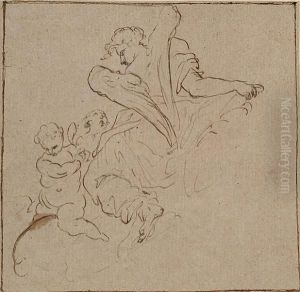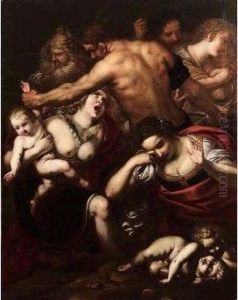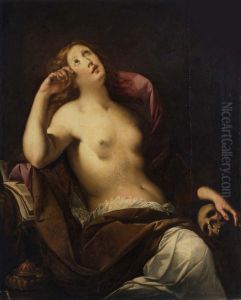Giuseppe Danedi Il Montalto Paintings
Giuseppe Danedi, also known as Il Montalto, was an Italian painter born in 1610, during the late Renaissance period, which transitioned into the early Baroque era. His life and work were primarily centered in Milan, a city that was a significant cultural hub in Italy during his time. Despite the prominence of other regions like Florence and Rome in the Italian art scene, Milan provided a vibrant backdrop for Montalto's development as an artist.
Il Montalto's artistic journey was marked by a deep connection to the spiritual and religious contexts of his era, reflecting the Counter-Reformation's influence on art. This period sought to reassert the Catholic Church's dominance in cultural and spiritual life, significantly impacting the themes and styles of artists like Danedi. His works are characterized by their intense spirituality, dramatic use of light and shadow, and a focus on biblical and mythological themes, common elements in Baroque art.
Training and influence played a crucial role in shaping Montalto's style. He is often associated with the school of Morazzone, under whom he is thought to have studied. This connection provided him with a foundation in the dynamic and emotive qualities that defined the Baroque movement. However, Montalto also developed a distinct personal style, marked by a delicate use of color and a nuanced approach to composition, setting him apart from his contemporaries.
Throughout his career, Il Montalto contributed significantly to the artistic landscape of Milan. His works were sought after for churches and noble residences, where his ability to convey profound religious experiences and narratives was highly valued. Despite his success, detailed records of his life remain sparse, and many of his works have been attributed to him based on stylistic analysis rather than concrete documentation.
Giuseppe Danedi Il Montalto passed away in 1689, leaving behind a legacy that, while not as widely recognized as some of his contemporaries, represents an important facet of the Baroque period in Italy. His contributions to the art of his time underscore the diversity and depth of talent that flourished across the country during a period of significant cultural and artistic development.


